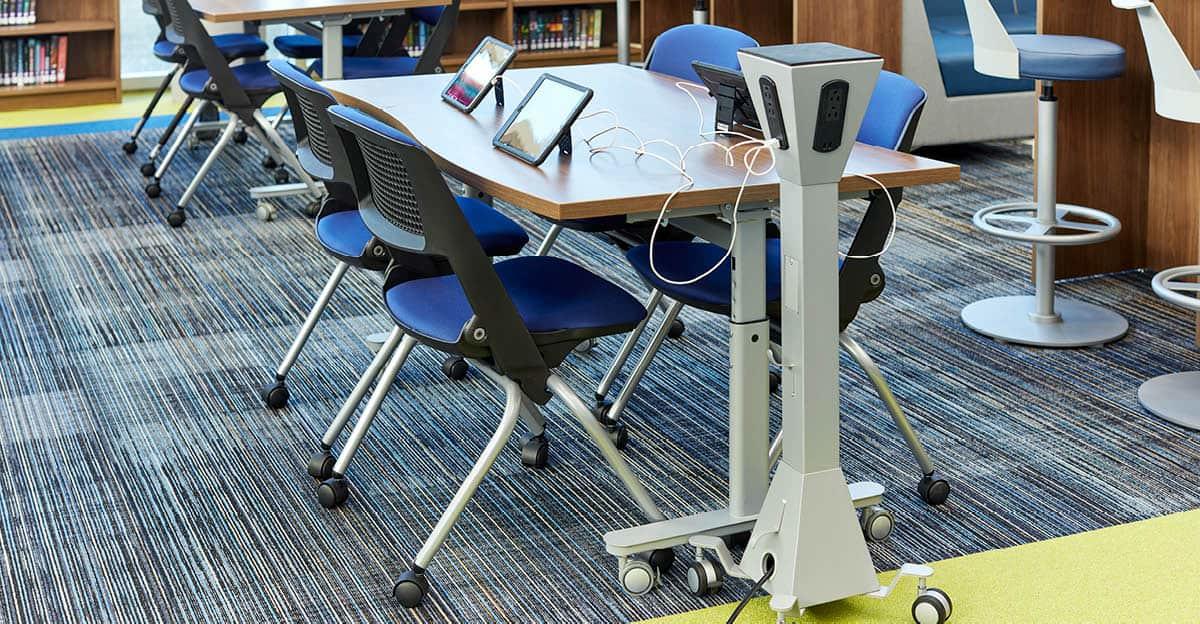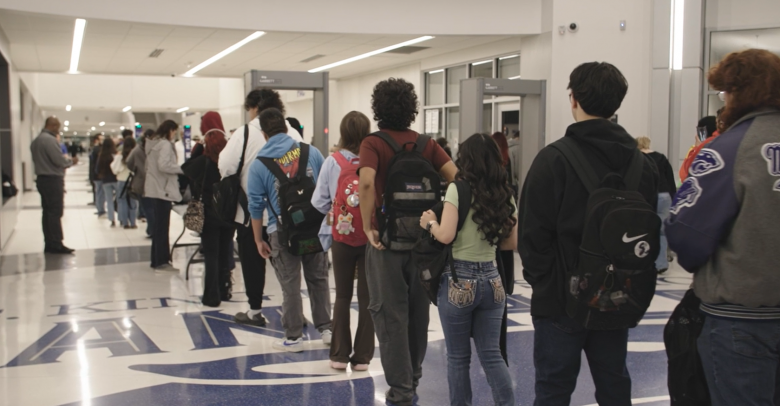Designing a modern school library that meets 21st century learning goals begins with understanding the new roles that your media specialist will play —as well as how your library will be used.
Once you’ve taken these steps, it’s time to think about the design of the physical space—including what school library furniture you’ll use—in order to support these activities. Here are four key questions to guide you.
How can we achieve our design goals through some combination of learning zones and movable, agile school library furniture that can serve multiple purposes?
It goes without saying that the design of a learning space should seamlessly support the kinds of activities that take place there. One way to design a modern school library that can serve multiple purposes is to create separate zones for accommodating various types of activities.
For instance, you could have separate, distinct areas for creating, presenting, collaborating, and investigating. Each of these zones would be equipped with school library furniture, tools, and materials that are appropriate for those tasks. The presenting zone might be equipped with an interactive whiteboard and projector, while the creating zone could include makerspace tables with built-in shelving to store materials.
Of course, not every type of activity will have its own learning zone; there simply isn’t enough space to create distinct zones for every possible use of your library. This is why you should consider using flexible, agile school library furniture that can be moved around easily to create various spatial configurations to support your learning goals—such as movable shelving and tables that can be configured in multiple ways.
Using fixed zones to support some activities and flexible, agile spaces to support others will help you design a space that aptly serves multiple purposes. Think about which kinds of activities make the most sense to support with permanent, fixed zones and which you can support with flexible, multiuse spaces—and then design your library around these principles.
How can we achieve the design goals for our modern school library by using multiple seating styles that give students numerous options?
In furnishing the space, you’ll want to match different seating styles to the types of activities they support most effectively.
For instance, tables that can be pushed together in configurations seating two, three, four, or five students are perfect for supporting small-group collaboration with flexible group sizes. Soft, comfortable chairs are great for students who want to sit and read or work independently. Nook
pods are perfect for pairs of students who want some privacy as they work together on projects.
The key is to offer a variety of choices, so students can work where they’ll be most comfortable and productive to accomplish the task at hand.
How will we balance the need for storage and materials with the need for instructional spaces?
As resources are moving to electronic formats, physical library collections are shrinking in size—and this creates more space for learning to occur. But unless you’ve gone to an all-digital model, your library is still likely to contain at least some books.

In designing the space, you’ll need to consider how much space you should devote to storage and display of physical materials and how much you’ll carve out for learning, creating, and collaborating. Also, think about where the circulation desk should go in relation to other activities and where to place high-priority items so they’re seen by the most people.
How will we support digital learning with the proper technology infrastructure?
If students will be researching, creating, and collaborating using laptops, Chromebooks, or tablets, they’ll need electrical outlets for charging these devices. Think about how you can support this need with tables and soft seating that contain built-in power supplies, so students can work comfortably wherever they want to without being disrupted by a dead battery.
The modern school library is a multi-use space for the entire school community. It’s a learning commons that serves as a central hub for digital learning and teaching in a school or district, and the design of this critical space should reflect this new reality.
To learn more about designing a school library space that meets 21st century learning goals, download our free guide “Designing a Modern School Library” today.






Leave a Reply